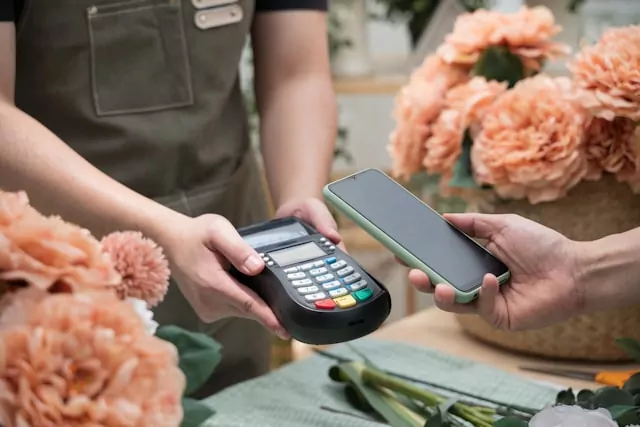Remember when crafting an app felt like climbing Mt. Everest in flip-flops? Those days are behind us! No longer do you need years of coding lessons or deep pockets to hire a dev team. In this beginner’s guide to building apps without writing code, we’ll first explain what low-code and no-code platforms are. We’ll introduce the platforms available to you, guide you on building an app with one of the prominent builders, the costs, detail how to incorporate monetization, outline the steps for getting your app approved in the app store, discuss the actions to take after your app is released and share real-life success stories of app developers who, with no coding experience, launched significant apps.
The difference between no-code and low-code development
No-Code Development: Designed for users with little to no programming experience, enabling them to create applications through visual interfaces and drag-and-drop functionality without writing any code. Typically caters to more basic and standardized applications, as it relies on predefined templates and components.
Low-Code Development: Offers a visual development environment but also allows for more customization and integration through minimal hand-coding. Suited for more complex applications or those that require specific functionalities beyond what no-code solutions can provide, while still simplifying and speeding up the development process.
The benefits of using a no-code platform
- Cost-effectiveness
- Faster time to market
- Flexibility and scalability
- No coding knowledge required
- User-friendly interfaces
- Reduced dependency on developers
Popular no-code platforms and their pricing
Bubble: A versatile platform for creating web applications with complex functionalities that offers advanced capabilities for building web applications with databases, workflows, and APIs. Offers a free plan with limitations, while paid plans start at around $25/month and can go up based on usage and features.
Adalo: Focuses on mobile app development, providing a range of pre-built components. Provides a free plan with limited features. Paid plans start at $50/month for individual use and increase for team or business plans.
Thunkable: Allows the creation of mobile apps with an intuitive drag-and-drop interface and supports cross-platform development. Offers a free plan with basic features. Paid plans start at $20/month for personal projects and go up for more advanced needs.
Appy Pie: Offers both web and mobile app development, including e-commerce and business apps. Has a free plan with ads and Appy Pie branding. Paid plans start at around $18/month, with more features and customization options.
OutSystems: While leaning towards low-code, it provides powerful capabilities for app creation. Pricing is available upon request and is typically tailored to enterprise needs.
Glide: Specializes in turning spreadsheets into functional apps, particularly useful for data-centric applications. Offers a free plan with Glide branding. Paid plans start at $19/month for individual use, with higher tiers for more apps and features.
Webflow: A design-oriented platform for creating visually appealing websites and applications. Provides a free plan with limitations. Paid plans start at around $16/month for hosting, with higher plans for more features and capabilities.
AppGyver: Enables the development of complex apps with a focus on data integration and logic. Offers a free plan with limitations. Paid plans start at $25/month for individual use and increase for team or business plans.
Zoho Creator: Offers a wide range of pre-built app templates for various business use cases. Pricing starts at $10/month per user for the basic plan and can increase based on the number of users and features required.
Ninox: Provides a database-driven approach to app development, suitable for managing projects and processes. Offers a free plan with basic features. Paid plans start at $8/month per user for more advanced features and support.
The steps to build and release your first app
1. Define Your App Idea: Before diving into any app builder, it’s crucial to have a clear understanding of your app’s purpose, its target audience, and the primary features you want to include.
2. Choose a No-Code Platform: There are many no-code platforms available, such as Bubble, Adalo, Appy Pie, Glide, etc. Research and select one that fits your needs and budget.
3. Sign Up & Familiarize Yourself: Create an account on your chosen no-code platform. Spend time getting to know its interface, tools, and capabilities.
4. Design the App:
User Interface: Use the platform’s drag-and-drop tools to design the app’s screens, layout, and user interface.
Add Functionality: Incorporate actions, database operations, and integrations as required. Many no-code tools have pre-built functions you can use.
Test the Flow: Ensure the user flow is logical and intuitive. Rectify any navigation or action issues.
5. Test Your App: Most no-code platforms allow you to test your app in real time on a mobile device or via an emulator. Rigorous testing helps you identify and rectify any issues before going live.
6. Prepare for Launch:
App Icon & Graphics: Design and upload an app icon and other required graphics.
App Description: Write a compelling description, highlighting your app’s main features.
Determine Pricing: Decide if your app will be free, paid, or include in-app purchases.
7. Create Developer Accounts:
For iOS: Sign up for an Apple Developer Program. There’s an annual fee involved.
For Google Play: Create a Google Play Developer account. There’s a one-time fee.
8. Publish Your App:
iOS:
1. Use your no-code platform to generate an iOS build.
2. Submit the build via Apple’s App Store Connect.
3. Wait for Apple’s review process. If approved, your app will be available on the App Store.
Google Play:
1. Use your no-code platform to generate an Android build.
2. Submit the build via the Google Play Console.
3. The review process is generally quicker than Apple’s, and once approved, your app will be live.
9. Promote Your App: Once your app is live, spread the word! Use social media, press releases, influencer partnerships, or other marketing tactics.
10. Monitor & Update: Check user feedback, monitor app reviews, and analyze any analytics provided by your no-code platform or the app stores. Regularly update your app to fix bugs, improve performance, or introduce new features.
11. Iterate: As you gather more feedback and understand your users better, you can make changes and updates to your app to better serve your audience.

Real-life stories of non-coders who launched significant apps
- Nick Walter – Learn to Code App: Nick Walter, a non-coder, used the Bubble app builder to create an app called “Learn to Code.” The app offers coding tutorials and resources for beginners. Nick’s app gained traction in the education sector and helped aspiring coders start their programming journey without prior technical knowledge.
- Ben Mackenzie – Gym Genius App: Ben Mackenzie used the Adalo platform to build Gym Genius, a fitness app designed for tracking workouts and providing exercise routines. Despite lacking coding skills, Ben was able to create a user-friendly app that resonated with fitness enthusiasts, leading to thousands of downloads.
- Abdul Qadir – Pakistani Stories App: Abdul Qadir, an entrepreneur from Pakistan, used Appy Pie to develop the “Pakistani Stories” app. The app showcases Pakistani literature, stories, and cultural content. Despite having no coding background, Abdul successfully created a platform that celebrates his country’s rich heritage and storytelling tradition.
- Anshul Bhagi – Gamezop App: Anshul Bhagi used a no-code platform to create Gamezop, an app that hosts a collection of casual games. The app gained popularity for its diverse game library and ease of use. Anshul’s success story demonstrates how non-coders can tap into the gaming market with creative solutions.
- Kat McDowell – Cluckn App: Kat McDowell, a singer-songwriter, created the Cluckn app using Adalo. The app allows users to create customized chicken sounds and share them with friends. Kat’s fun and unique app idea attracted users looking for lighthearted entertainment.

App development is accessible to all
The app development landscape has been made significantly more accessible with no-code platforms. These steps outline a straightforward journey from conceptualization to publication for app entrepreneurs, ensuring they can turn ideas into tangible products without the traditional technical know-how. Remember, even with no-code tools, building an app is a process. While the technical barriers might be lower, you still need a clear vision, a user-centric design, and a good understanding of your market to create a successful app.
Become a subscriber of App Developer Magazine for just $5.99 a month and take advantage of all these perks.





















Discussion about this post